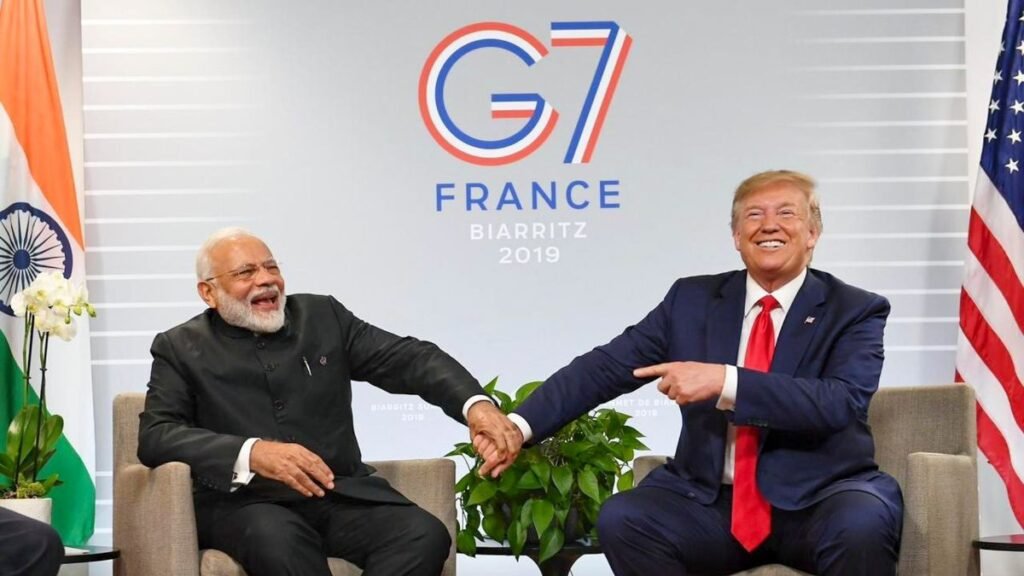Deeper linkages and increasing tensions characterise the new era of the US-India economic relationship. The June 2025 FT-900 Report from the US Census Bureau recently revealed that although bilateral trade is increasing, the disparity is widening at a startling rate.
India’s imports increased 26.1 per cent to $56.3 billion in the first half of 2025, while US exports to India increased 5.4 per cent to $22.1 billion. As a result, the goods deficit increased from $23.7 billion to $34.3 billion.
The seasonally adjusted deficit was $5.3 billion in June alone. The US trade deficit with India, including services, increased from $38.7 billion in 2022 to $45.8 billion in 2024. Products with advanced technology are where the disparity is most noticeable.
The United States imported $15.2 billion and exported $3.8 billion in ATPs to India in the first half of 2025, resulting in a $11.4 billion shortfall. The figures highlight both the growing significance of India in US technology value chains and the challenge of quantifying intricate bilateral flows.
Tariff walls deepen tensions
Tariff imbalance accounts for a large portion of the deficit. With average MFN duties of 3.3 per cent (5.0 per cent for agriculture and 3.1 per cent for non-agriculture) and more than half of non-agricultural tariff lines duty-free, the US maintains a very open market. However, politically sensitive agricultural industries, including sugar (12.1 per cent), dairy (17.2 per cent), and drinks and tobacco (17.2 per cent), are still shielded by quotas and protections.
India, on the other hand, has far higher rates. In 2024, bound agricultural duties averaged 113.1 per cent, with some surpassing 150 per cent, while average MFN tariffs were 36.7 per cent for agriculture and 13.0 per cent for non-agriculture. Innovation-related industries have the biggest disparities: India charges 11 per cent on electrical machinery and 8.3 per cent on computer equipment, while the United States only charges 1 per cent to 1.3 per cent. While US levies on comparable commodities are normally between 2 and 3 per cent, American pharmaceutical and medical device companies are subject to tariffs exceeding 30 per cent. This difference enables Indian companies to rely on tariff protection that has fostered competitive generics and IT services, while US inventors may take advantage of low-cost inputs and global supply networks. However, protection restricts India’s ability to join global value chains that are rich in intellectual property.
The US counterattack has widened the gap. Citing India’s ongoing imports of Russian oil, President Donald Trump placed 50 per cent tariffs on a variety of Indian products on August 27, 2025, including clothing, textiles, jewellery, gems, footwear, furniture, chemicals, and seafood. The action caused the biggest rift in bilateral commercial relations in decades by doubling existing levies, which now apply to 55–66 per cent of India’s exports to the United States. India’s labour-intensive industries will be most affected, and there is a chance that jobs in the jewellery, textile, and footwear industries may be lost. To lessen the impact, New Delhi is already thinking about financial assistance, diversification tactics, and new markets.
IP battles add to the strain
Tariffs are only part of the story. Intellectual property has emerged as a similarly contentious topic. The 2024 USTR Special 301 Report once again ranked India as one of the most problematic economies for intellectual property protection, citing “inconsistent progress.” Patent issues remain essential. Firms in the United States complain about lengthy approval delays, frequent pre-grant oppositions, and the limited use of Section 3(d) of the Patents Act. The Patents (Amendment) Rules, 2024, reduced some compliance burdens, although predictability remains weak. Pharmaceutical businesses point to the lack of early-resolution methods for notifying patent holders of follow-on applications, as well as inadequate protections against the unfair exploitation of regulatory test data.
The challenges go beyond patents. Even with speedier trademark assessments, backlogs in piracy, counterfeiting, and trademark opposition exist. Section 31D of the Copyright Act continues to cause ambiguity for digital broadcasting, and India has yet to enact a specialised trade secrets law, despite a 2024 Law Commission recommendation. The requirement for international telecom corporations to submit source code during security testing has prompted additional worries, as has the Biological Diversity Rules, 2024, which require clearances for patents related to Indian biological resources. India maintains the rules as necessary for sovereignty, but US companies see them as further hurdles.
The deficit, tariff imbalance, and intellectual property issues exacerbate one another. India’s protective framework has allowed local enterprises to dominate in generics and IT while keeping products affordable domestically, albeit at the expense of international, intellectual property-heavy investments. The United States, with low tariffs and strong intellectual property protection, is vital to global value chains, but its openness has increased deficits and provoked political backlash.
Finding a middle path
Working groups won’t be enough to resolve this difference. India needs to update its intellectual property laws, eliminate ambiguities and delays related to trade secrets, copyrights, patents, and trademarks, and lower tariffs on products that are driven by innovation. In turn, the United States needs to fight for more transparency while acknowledging India’s demands for access to technology, food security, and reasonably priced healthcare.
Although the data clearly shows that economic linkages are strengthening, the very industries that are supposed to spur innovation run the risk of continuing to be flashpoints if tariffs and intellectual property are not aligned. Cheaper oil imports are one way for India to mitigate tariff shocks, but developing a cooperative relationship with Washington is a more calculated move. Both countries must choose whether to let IP disputes and tariffs become a source of rivalry or to use them as the cornerstones of an innovative collaboration that has the potential to transform the world economy.
The author is Assistant Professor in Economics and Public Policy, IIM Raipur

